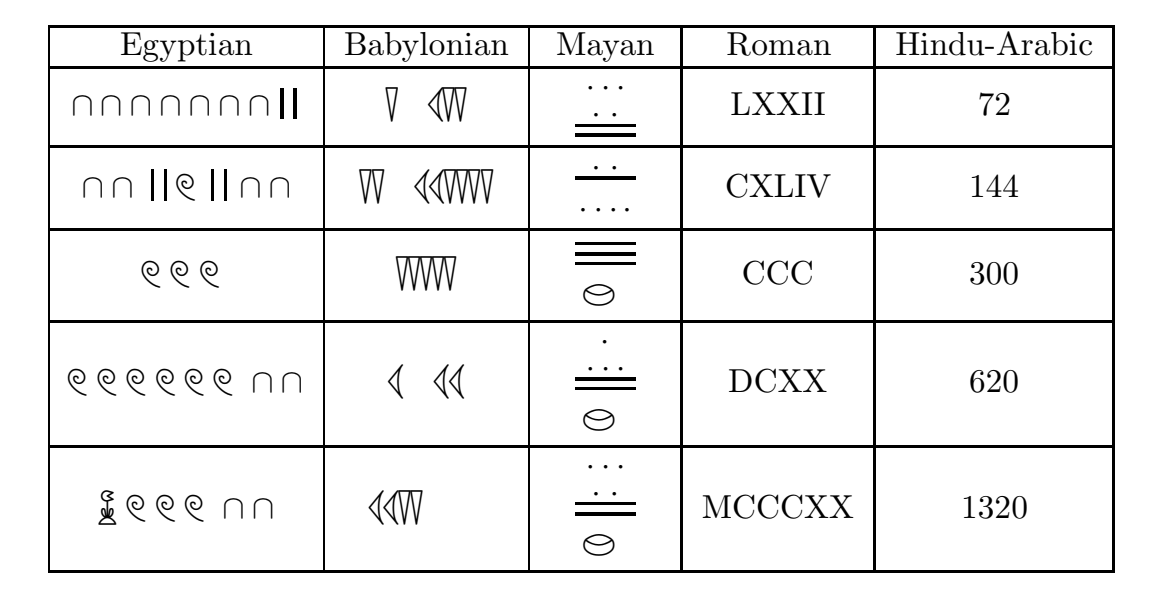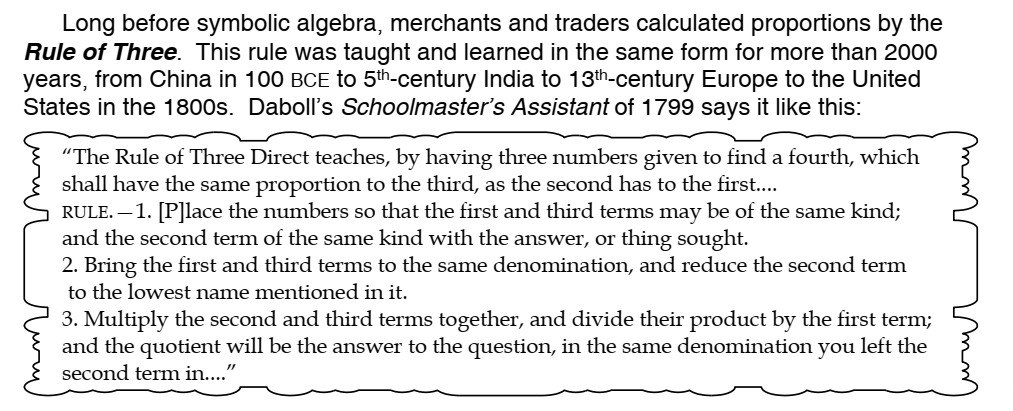- About MAA
- Membership
- MAA Publications
- Periodicals
- Blogs
- MAA Book Series
- MAA Press (an imprint of the AMS)
- MAA Notes
- MAA Reviews
- Mathematical Communication
- Information for Libraries
- Author Resources
- Advertise with MAA
- Meetings
- Competitions
- Programs
- Communities
- MAA Sections
- SIGMAA
- MAA Connect
- Students
- MAA Awards
- Awards Booklets
- Writing Awards
- Teaching Awards
- Service Awards
- Research Awards
- Lecture Awards
- Putnam Competition Individual and Team Winners
- D. E. Shaw Group AMC 8 Awards & Certificates
- Maryam Mirzakhani AMC 10 A Awards & Certificates
- Two Sigma AMC 10 B Awards & Certificates
- Jane Street AMC 12 A Awards & Certificates
- Akamai AMC 12 B Awards & Certificates
- High School Teachers
- News
You are here
Pathways from the Past: Classroom-Ready Materials for Using History to Teach Mathematics
One of the pitfalls of mathematics instruction at any level is the tendency to teach answers to questions that students don’t (yet) have. Explaining the history of an idea often is a good way to help students see the questions and thought patterns that underlie a concept or process they are being asked to learn. Many teachers agree with this in theory, but they don’t do it. Why not? Perhaps there are two main reasons:
- There is no convenient source of information about the topic they are teaching.
- They think time spent on historical material takes away from time needed to teach what is in the curriculum.
We wrote Math through the Ages to address the first reason. The main part of that book presents 4-to-6-page synopses of the history of 30 common topics in middle- and high-school mathematics curricula, preceded by a broad-brush overview of the history of mathematics condensed into 58 pages. Our hope was (and is) that a teacher preparing a lesson on one of these topics—e.g., negative numbers or fractions or quadratic equations or probability—would easily find interesting motivational material in our short section on that topic.
To address the second reason directly, we wrote Pathways from the Past. Each of the Pathways volumes contained a packet of reproducible student activity sheets that use historical settings to teach or reinforce basic mathematical lessons. Each packet was accompanied by an instructor’s guide.
Since Oxton House no longer publishes these materials, we have made them freely available as two pdf files. In each file the instructor’s guide appears first, followed by the printable worksheets. Links to each packet appear at the bottom of this page.
Here are two examples from the first packet, which is about numbers, numerals, and arithmetic.
- To reveal the separate implications of decimal and place in our decimal place numeration system, there are activity sheets for systems without at least one of those properties—Egyptian hieroglyphic, Babylonian cuneiform, Mayan, and Roman. Students learn about place value and get practice with powers and multiples of numbers as they work on these sheets. The unusual settings make the arithmetic useful and interesting, rather than routine drill done for its own sake.
- Some of our most common “rules of thumb” for fraction arithmetic depend more on the way we write fractions than on their values. (For instance, “invert and multiply” makes no sense unless fractions are written as stacked pairs of numbers.) The activities for fractions explore the history of fraction notation and its effect on how we compute. Along the way, it gives students meaningful practice with the common rules for manipulating fractions.

Figure 1. Table comparing the notation of the numeration systems featured in Pathways Packet 1.
The second packet focuses on algebra. It starts by exploring algebra without symbols and how the (gradual and erratic) introduction of symbols affected the ways in which algebraic ideas are understood. Then it moves on to sections about linear, quadratic, and cubic equations. Here are two examples.
- Proportion, the fundamental idea of linearity, was a key principle of commercial arithmetic for many centuries. Its widespread use spawned a rule for calculating proportional values “automatically” in a variety of circumstances. This algorithm, which became known as the “Rule of Three,” was a standard topic virtually everywhere arithmetic was taught—in the China of 100 BCE, in India of the 5th century, in the 8th-century Arabic work of al-Khwarizmi, in Renaissance Europe, and in British and American schoolbooks into the 20th century. These activities focus on how this rule was used in Colonial America, especially in commerce, to cope with the bewildering variety of monetary systems used at the time. This provides practice with arithmetic skills and number sense in real historical contexts and gives students a deeper appreciation of the power of our decimal system of currency.
- To illustrate how quadratics are inextricably linked with the geometric idea of squares, we begin with a pictorial analysis of al-Khwarizmi’s verbal description of solving what we would nowadays call a quadratic equation by “completing the square.” Working through these activities, students acquire awareness of the interplay between algebra and geometry, something often overlooked in standard curricula. They also get a conceptual foundation for the development of the Quadratic Formula, which appears later in that unit.

Figure 2. An excerpt from a student worksheet on the Rule of Three from Pathways Packet 2 (Activity 2-1).
For a time, Oxton House Publishers sponsored teacher workshops using these Pathways packets. The responses from attendees were overwhelmingly positive, as indicated by the following quotes from the workshop evaluations:
- “I am very excited to use these [materials] in the classroom. The info correlates with the standards I teach and are the areas my students struggle with.” (8th Grade Teacher)
- “I love the materials. The activities are well constructed and ready to use with kids.” (7th Grade Teacher)
- “I loved the materials. I will be able to use these throughout the year in my class.” (7th Grade Teacher)
- “Great info that is readily incorporated into any curriculum.” (6th Grade Teacher)
- “I very much enjoyed this workshop and look forward to using the materials.” (Title I Teacher)
- “This material is something that I can see fitting into various grade levels.” (High School Algebra Teacher)
- “I would recommend this workshop to any high school math teacher.” (High School Math Teacher)
One comment from a middle-school teacher merits particular attention. She taught in a school that prided itself on integrating its curriculum across subject lines. Whenever they had special project days or events, the math people were always relegated to tasks like measuring the sizes of buildings or the height of the flagpole. Now, she said, she had some real material to integrate with the social studies curriculum! This was echoed in another workshop, attended by both math and social studies teachers from the same school.
As Bill often said in those workshops, we never thought of these activities as definitive or comprehensive. They are offered to teachers as samples of engaging, history-based, activities they can create for their own students—activities that reinforce what they are teaching and assist in achieving the learning goals of whatever curriculum they teach.
The two Pathways from the Past packets can be downloaded as pdfs using the following links. We hope they will be useful both to teachers and those preparing to be teachers.
Bill Berlinghoff and Fernando Gouvêa (Colby College), "Pathways from the Past: Classroom-Ready Materials for Using History to Teach Mathematics," Convergence (May 2020), DOI:10.4169/convergence20200607




